Are Labradoodles Hypoallergenic? (Labradoodle Allergy Guide)
Despite not being an officially recognized dog breed, Labradoodles are clever, intelligent dogs that have been popular pets since the 1950s.
All well and good, but are Labradoodles hypoallergenic?
The answer is a surprising no. The degree to which a Labradoodle is hypoallergenic can vary depending on its parentage. That’s because while the Poodle parent is, to all intents and purposes, a hypoallergenic dog, the Labrador parent isn’t.
How hypoallergenic Labradoodle puppies depend on what genes they get from what dog. That means that in a first-generation Labradoodle litter, you may get a mix of hypoallergenic and non-hypoallergenic puppies.
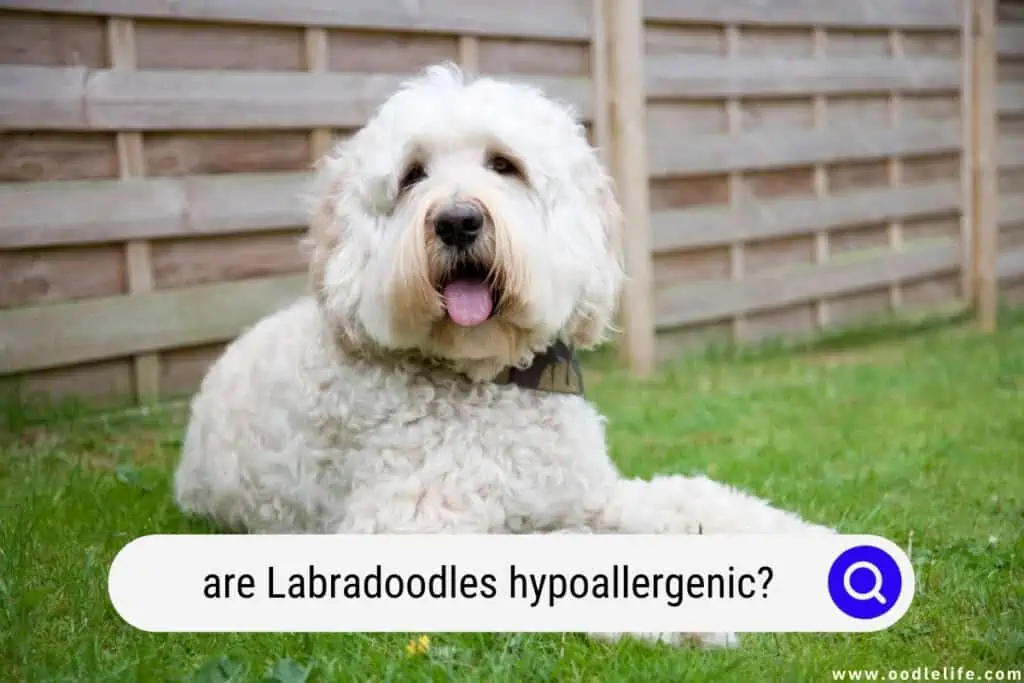
What Makes Dogs Hypoallergenic?
People are often surprised to hear that Poodles are hypoallergenic dogs because they have such woolly, curly coats. Not only that, but the Poodle coat has a reputation for requiring lots of grooming.
But what Cochran correctly realized back in the 1970s is that it’s not how thick a dog’s coat is that makes it hypoallergenic. What matters is how much dander the dog produces.
To be clear, all dogs produce dander. How much they produce depends on whether or not the dog has hair or fur. Both derive from the keratin protein, but that’s where the similarities end.
The most significant difference occurs in the growing cycle. Canine fur reaches a certain length and then falls out, taking the dander with it. The amount of fur a dog sheds also depends on the season.
The other significant difference between hair and fur is that dogs with fur typically have multiple coats. There’s the overcoat, the fur you see daily, and the less visible undercoat.
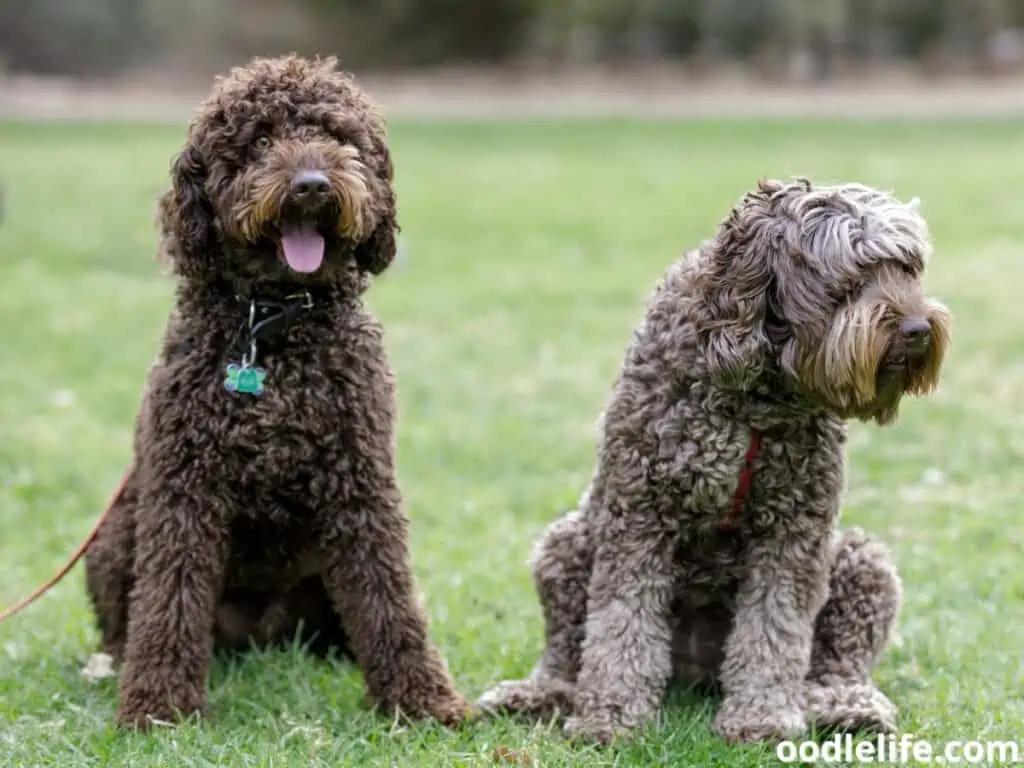
As the undercoat sheds, it can get caught in the dog’s overcoat and cause matting. Even if it doesn’t, the shedding of both layers of fur involves a high degree of dander, and that triggers allergies.
Conversely, dog hair grows indefinitely, which is why, with breeds like Labradoodles and their Poodle parents, trips to the groomer quickly become essential. But because hair falls out much more gradually than fur, these dogs also produce less dander. And that’s what makes Labradoodles hypoallergenic.
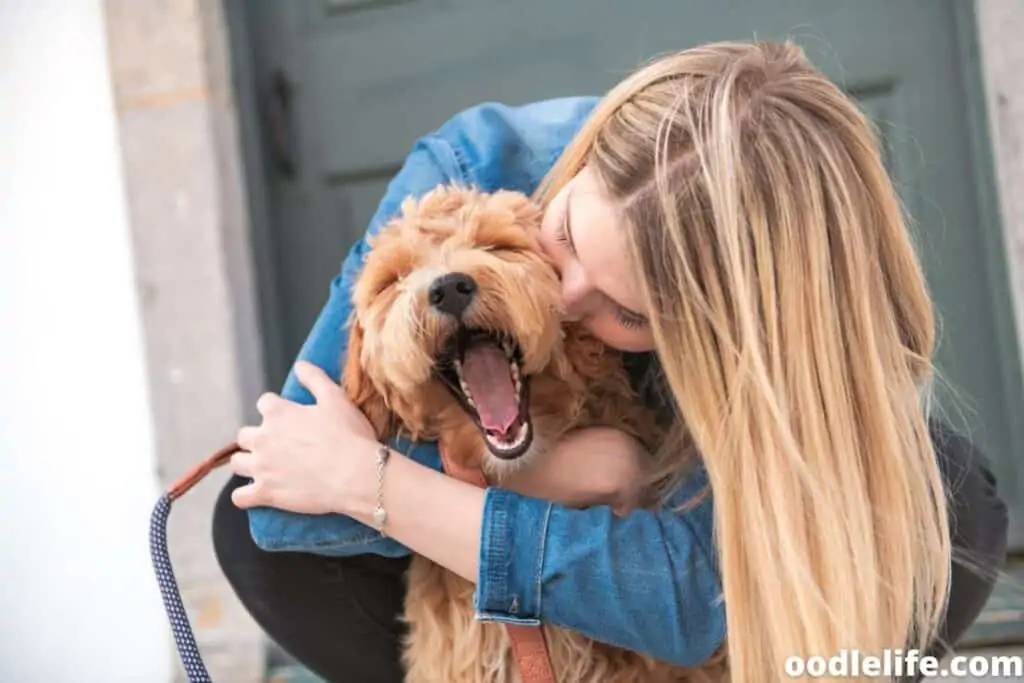
Are Labradoodles Completely Hypoallergenic?
Having said that all dogs produce dander, it’s natural to wonder if all Labradoodles are hypoallergenic.
The answer is no. The degree to which a Labradoodle is hypoallergenic can vary depending on its parentage. That’s because while the Poodle parent is, to all intents and purposes, a hypoallergenic dog, the Labrador parent isn’t.
How hypoallergenic Labradoodle puppies depend on what genes they get from what dog. That means that in a first-generation Labradoodle litter, you may get a mix of hypoallergenic and non-hypoallergenic puppies.
That said, a Labradoodle is still more hypoallergenic than a Labrador. So, by the time you breed two Labradoodles, the resulting puppies are more hypoallergenic than either parent.
So, in theory, the further you get from the Labrador ancestors, the more hypoallergenic the dog. But even that isn’t foolproof.
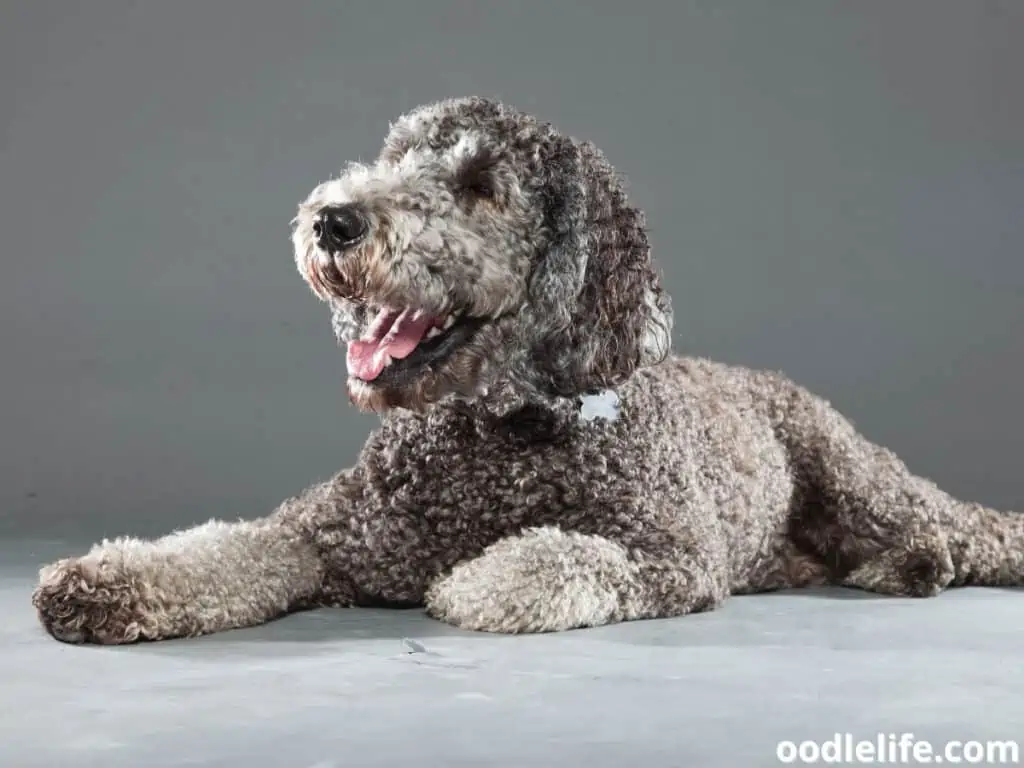
Coat Matters
When mixing Poodles with Labradors, you breed a dog with hair with a dog with a double-layered coat of hair. The results of that union are equally mixed. Some puppies end up with hair, and some have fur.
Some might have less fur than a Labrador but shed more than a Poodle.
In other words, you can’t start breeding Labradoodles to one another and presume that all the offspring will be hypoallergenic for the simple reason that some Labradoodles are hypoallergenic and others aren’t.
Breeders hoping to generate hypoallergenic Labradoodles become very specific about the dogs they mate. To get those hypoallergenic second-generation Labradoodles, you must breed two non-shedding dogs.
And you need to repeat the process because it’s not until the third generation that you start seeing demonstrably hypoallergenic Labradoodles.

How Can You Tell if A Labradoodle Is Hypoallergenic?
If you want to adopt a Labradoodle for its hypoallergenic properties, then guaranteeing you choose a dog you don’t react to is a vital part of the process.
Unfortunately, there’s no hard and fast way to tell by looking at a Labradoodle whether you will react to their dander or by how much.
One thing prospective Labradoodle owners can do is talk to the breeder about their Labradoodles’ pedigrees. Reputable breeders won’t mind discussing their dogs’ parentage or showing you their papers.
Since Labradoodles aren’t registered with organizations like The American Kennel Club, there won’t be official certifications the way there would be for a Poodle or Labrador. But there should still be paperwork to indicate what generation of Labradoodle the parents are and how much they shed.
The other thing a reputable breeder often does is agree to send you a test sample of the dog’s coat. These samples allow you to handle the hair or fur and judge if you react to it.
But because samples have less dander than dogs, the best thing you can do is arrange to visit the dogs. When planning these visits, remember that a reliable breeder won’t let you visit when the puppies are young. That’s because they are vulnerable to everything from distemper to giardia.
Instead, they will make you wait until the puppies are old enough to have their first round of vaccinations.
Moreover, don’t be surprised if the breeder sets a particular dog aside for you to interact with. It may feel like this takes some of the fun out of the adoption process, but the intent is to find the most compatible dog for you and reduce the chances of rehoming your new Labradoodle because of allergies.
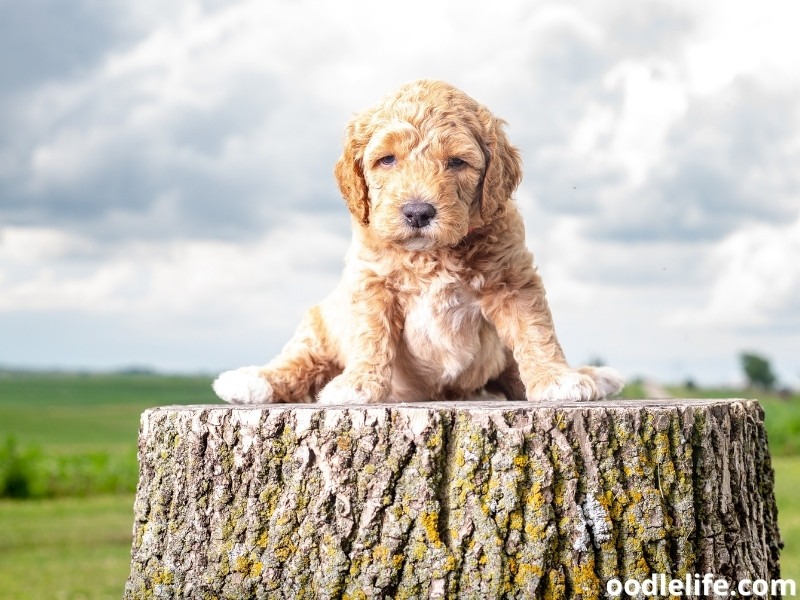
How To Manage Labradoodle Dander and Allergy Reactions?
Another thing to consider is that there are ways of handling your Labradoodle that can help manage how much dander their mixed coat generates. This can be helpful, especially if you have friends or family members with allergies who are in regular contact with your dog.
Baths Are Essential
Your Labradoodle may not like it, but one of the best ways to reduce dander and manage allergic reactions in less hypoallergenic Labradoodles is by bathing them.
Baths are ideal for washing out:
- Dead skin
- Excess fur
- Dust/dirt
A good shampoo sends the brunt of this detritus down the drain and stops it from accruing around the house. Your dog may not thank you for it, but a thorough bath often leaves them feeling better, too.
However, you can’t forget to comb out your dog’s coat after a bath. Otherwise, it can tangle and mat, and both of these unlikely things can cause health problems.
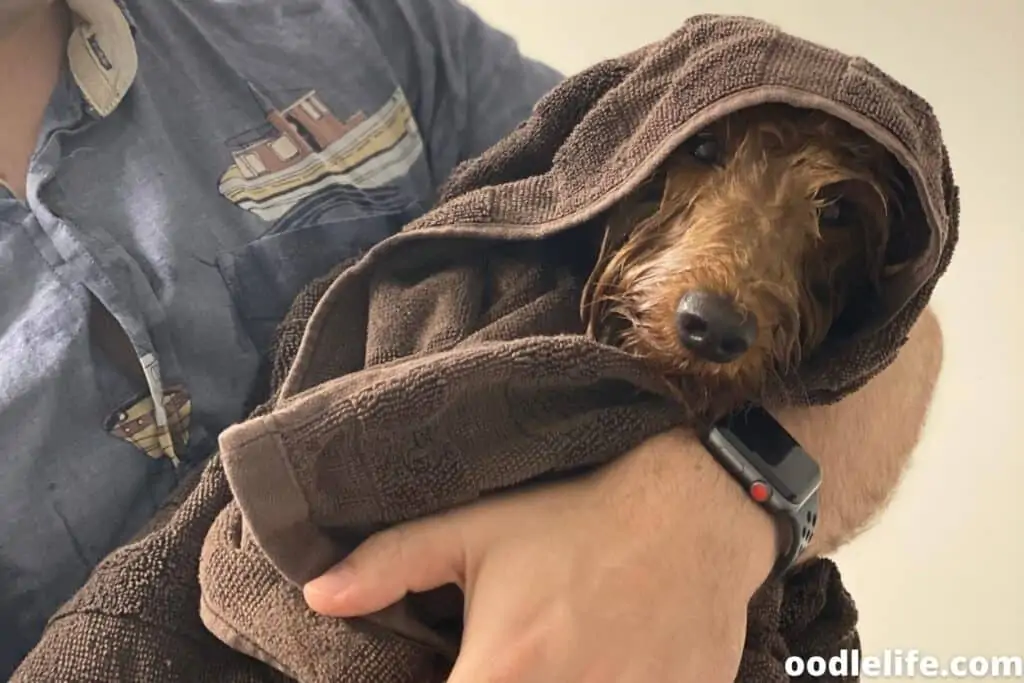
Trim Your Labradoodle’s Coat
Usually, trimming or shaving dog fur is discouraged because of how fur helps dogs regulate their body temperature. But this may only be primarily true of dogs with fur.
Dogs with shorter, woollier coats can benefit from a summer trim. That’s because, unlike fur, hair never stops growing. Left to its own devices, it would tangle, which can be painful.
The other advantage of keeping woollier Labradoodle coats shorter is that there’s less dander to get tangled up with their hair. That means fewer allergens for you to react to.
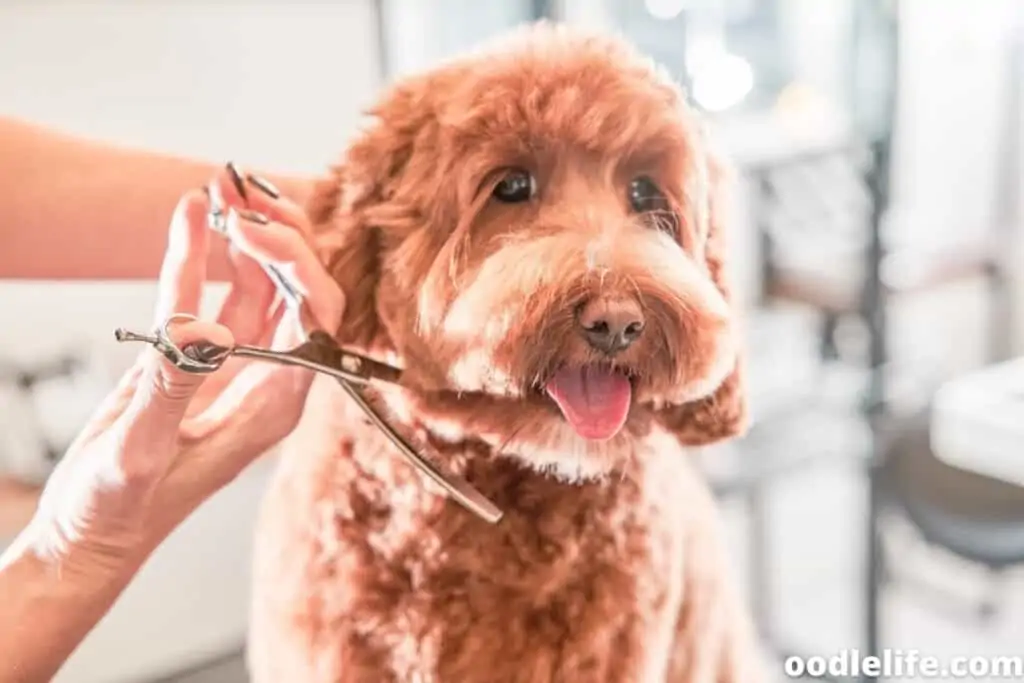
Clean Regularly
Finally, routine vacuuming and dusting can help remove dander from around your house. Pay special attention to your dog’s favorite places to sleep since those inevitably build up more hair than others.
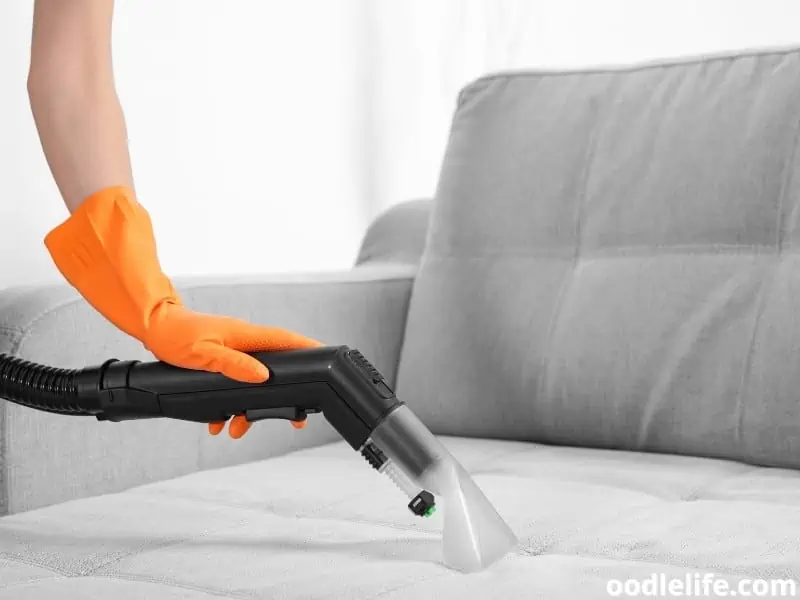
The History of the Labradoodle
To answer the question of “Are Labradoodles hypoallergenic?” it’s necessary to look at this crossbreed’s history.
People had been crossbreeding dogs for years by the time the Labradoodle appeared on the scene. But this particular canine mix was the brainchild of Australian Wally Cochran. While there had almost certainly been Labradoodles around before Cochran began actively creating them, Cochran was the first to give these dogs a name.
Cochran’s motivation came from reading about a blind Hawaiian woman whose dog-related allergies left her unable to accept the help of a guide dog. Historically, guide dogs were relegated to Labradors and Retrievers because of their people-pleasing personalities, loyalty, and speed of training.
But neither Retrievers nor Labradors are hypoallergenic dogs. Enter Cochran. He recognized that the other innately clever, loyal, and companionable working dog was the Poodle. Poodles began life as German duck hunters and had the added benefit of being hypoallergenic.
With that in mind, Cochran began mixing Poodles with Labradors, and the result was eight hypoallergenic Labradoodles.
So, that’s how the Labradoodle came to be, but what makes it hypoallergenic?
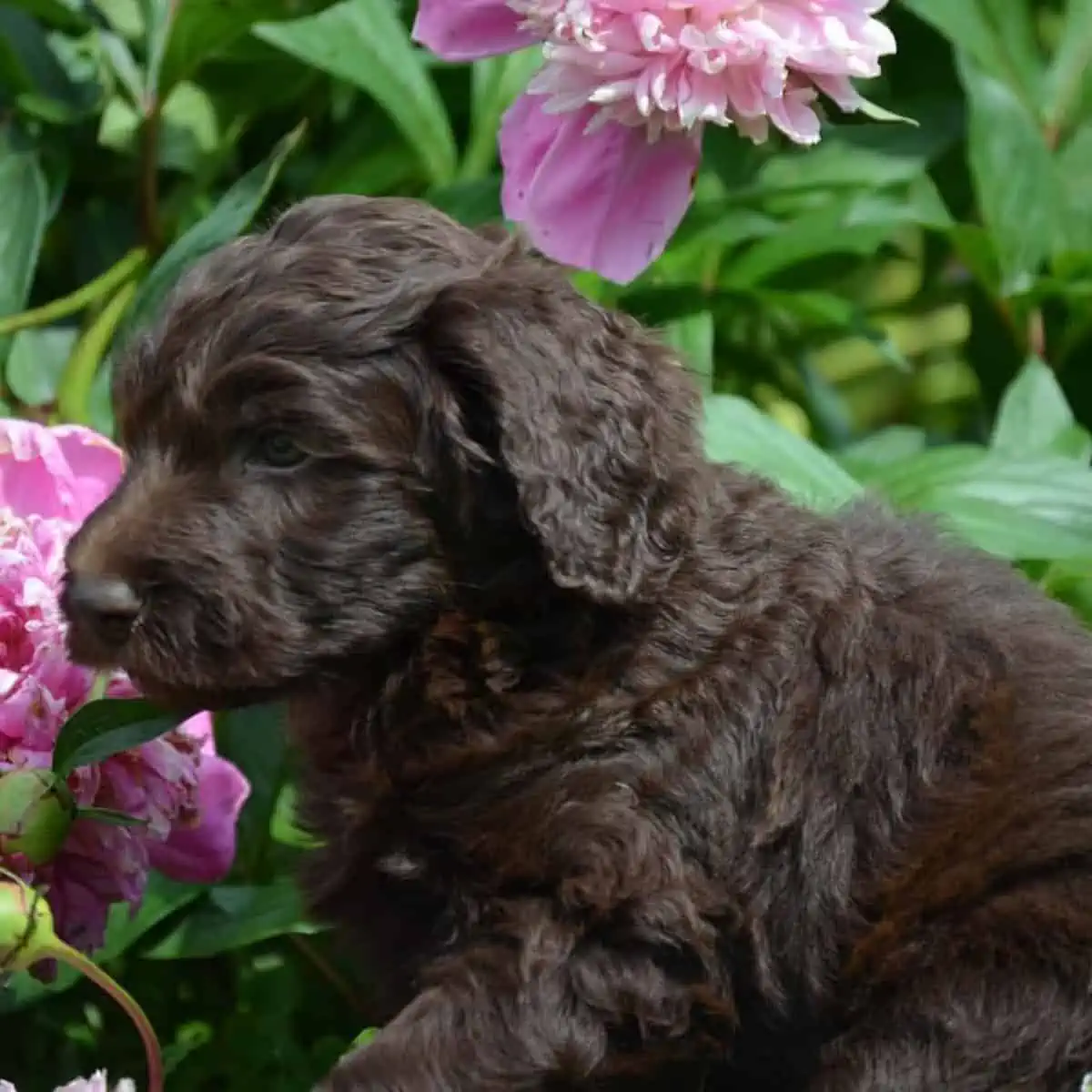
Summing Up
Are Labradoodles hypoallergenic? The answer isn’t as cut-and-dried as we might like. Some Labradoodles are, and others aren’t.
It all depends on the parentage and the genetic mix of the Labradoodle you acquire. As you debate adopting a Labradoodle, pay attention to their coat. Woollier, more Poodle-like coats are more hypoallergenic than their furrier counterparts.
Crucially, take time to visit the dog first. You want a companion for life, and it would be hard on both of you if you had to return your new best friend because of allergies. And if you do go forward with this canine partnership, remember that there are things you can do to reduce your exposure to allergens.
Bathing your dog helps, as does cleaning the house. It means more work for you, but, like any good partnership, it’s worth the effort.